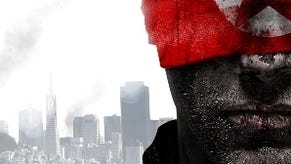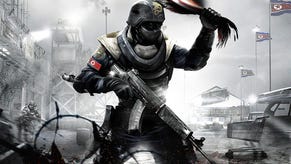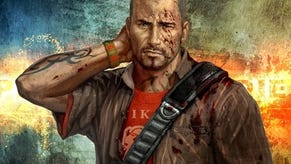Homefront
Duty bound.
It was all going so well until they tried to explain it. We've just been privy to a little bit of hitherto mysterious shooter Homefront, which features absurdly lavish environments and some retina-bothering firebombing effects. Its very much broken world looks as it does because North Korea invaded America in 2027...
OK, that's a little bit implausible and awfully indelicate as subject matters go - but then so's Russian separatists starting a war by pinning a ghastly terrorist act on a single American. Oh, military shooters - you've read far too many Tom Clancy books. Fine, give me a gun, let's start defending the homeland.
Later, after the shooting's done, a man who we have previously been told is known for security reasons only as 'Tae' walks onto the stage. The THQ presenter duly addresses him by his full name of Tae Kim. It's downhill from there for poor Tae, a former CIA operative and military advisor who's been hired to help craft the politics of Homefront's back-story. He's here today to explain why and how North Korea would invade America.
To start with, there's some plausibility - no-one expected Hitler, America's burning money at the moment, North Koreans are taught to hate the US, the two country's GDP might start to equalise. But the jig's up when he predicts a viral outbreak killing millions of Americans in 2021. Oh, Tae. Tae, Tae, Tae. You just had to go sci-fi, didn't you?
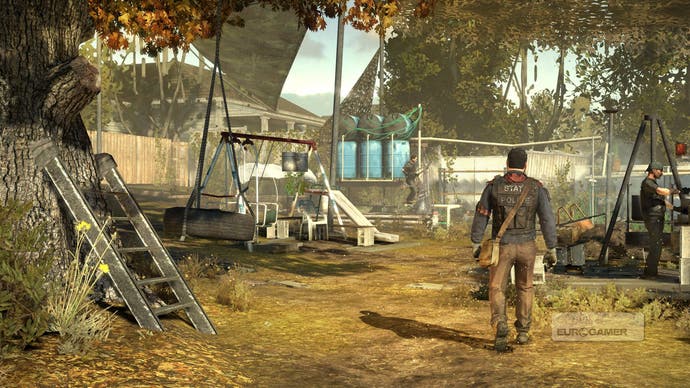
It is very much best not to know the how and why in a situation as silly as Homefront's. Too much reason spoils its fictional pudding. Just concentrate on what you can do in that situation. Coming from Kaos Studios, the creators of underwhelming Battlefield-like Frontlines: Fuel of War, many had expected Homefront to be more of the same - rival armies fighting for territory, with a rudimentary string of bot-occupied multiplayer maps masquerading as a single-player campaign.
This, though, is from what's being referred to as 'The New THQ'. Quality not quantity, every game a blockbuster: this is the plan. Homefront is, quite clearly, THQ hoping to have its own Call of Duty. There's as much to separate the two as there is to liken them, but in its sheen, in its bombast, in its patriotism and in its shooting lots of dudes, it's absolutely doing that latter-day videogame blockbuster thing.
What we're shown doesn't give a complete picture of how the game will play, but it's definitely a tightly scripted, high-production-value forward stomp, rather than anything free-roaming or capture-point based. There will be drivable tanks and helicopters, one of the developers hints later, but for the most part it's ultra-glossy run 'n' gun.
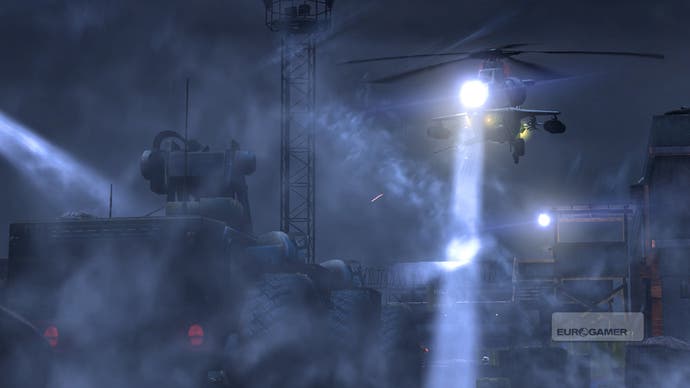
If you'd like a couple more comparisons, try THQ's own horror-shooter Metro 2033 and Valve's Half-Life 2. It's the latter that looms largest, with Homefront working hard to build a world of refugees in an invaded land. The environments tell the story at least as much as do the (interactive) cut-scenes - the junk and leftovers from which America's few free survivors have built irrigation and accommodation, the solar panels, the generator hooked up to an exercise bike, the strange juxtaposition of a colourful table football table inside a ruined hallway, the DIY armour worn by the resistance, the goats being milked in the back garden...
Make no mistake: American has fallen. There isn't a standing army, and there aren't any major population centres outside of Korean-guarded refugees camps. There's just these guys, this tiny handful of people making do - they have their lives, but not a lot else. "It's not quite the future we had in mind," says their kindly middle-aged (but buff) leader Boone, "but at least we're free. We've built ourselves a safe haven."
These sort of scenes act as both pace-breakers from the intense action, and as a reason to fight. In the first camp we see, children play and farmers farm: it's tranquil and it's honest. These are good people.


